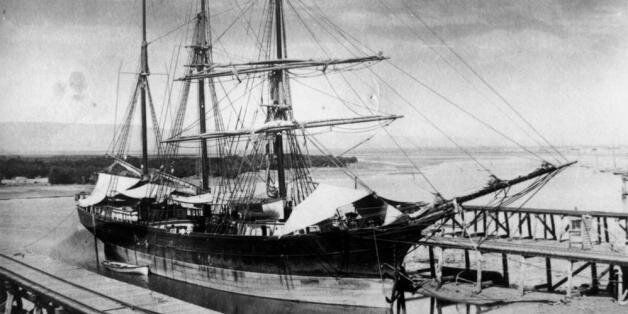
Patrick Mendis is a distinguished senior fellow at George Mason University's School of Public Policy and the author of Peaceful War: How the Chinese Dream and the American Destiny Creates a Pacific New World Order.
Every year, America celebrates the birthday of President George Washington, the founder of our nation. A far less recognized but momentous event in the world's history purposefully occurred on his 52nd birthday; the new nation officially inaugurated the commercial relationship with China in the dawn of American Independence. In 1784 -- exactly 230 years ago -- the Empress of China made its maiden voyage, departing New York for Canton (now Guangzhou) on a trade mission, heralded with a 13-gun salute to symbolize the unity of the original states.
The same Commerce Clause in the Constitution that united the 13 former colonies also linked the new republic "with foreign Nations" through international trade. With the Empress of China, the purpose-driven nation dislodged one more remaining interlocutor of the colonial oppression of the British and embarked on a "special" trade relationship with China.
The evolving trade relationship is even more important today than two centuries ago; the two countries have now engaged in another "special" kind of great power relationship after the Sunnylands summit between President Barack Obama and President Xi Jinping. Like the dual-faced Roman god of Janus looking forward and backward, the two leaders have seemingly perused history to see the future.
From the American Dream to the Chinese Dream
Evoking the American Dream, for example, President Xi has envisioned a "Chinese Dream" to galvanize "the great renewal of the Chinese nation" from its glorious past. Until the first Sino-British Opium War (1839-42), the United States and China enjoyed a mutually beneficial commercial intercourse for more than a century. It was neither an outcome of skillful diplomacy nor naval supremacy but largely America's love of tea and China's affection for ginseng.
Not unlike the Founding Fathers, Obama's vision for relations with China is embedded in his Asia "pivot" (or rebalance) strategy and the Trans-Pacific Partnership (TPP). Inspired by the Chinese civilization, our young nation's founders strived to create a commercial civilization in America. Charles Thomson, secretary of the Continental Congress, wrote that "this country may be improved beyond" what "might have been expected" if we could be "so fortunate as to introduce the industry of the Chinese, their arts of living and improvements in husbandry, as well as their native plants, America might in time become as populous as China, which is allowed to contain more inhabitants than any other country."
Trade with China was critically important to the nascent republic for its national security and economic development. It created a host of millionaires and families of wealth overnight; the surplus foreign exchange was invested in national infrastructure, such as ports, railroads, and banks. Personal friendships were also developed. For instance, the wealthy John Forbes (related to the Secretary of State John Forbes Kerry) invited his friend Howqua, the wealthiest man in China, to invest in American railroads.
During ensuing years, trade produced a balance-of-payment crisis. The imbalance became a serious concern as the trade-for-peace era ended as the two Opium Wars in China and the Civil War in America confronted the two countries with domestic challenges and political upheavals.
New Kind of Great Power Relationship
Some 200-plus years later, Presidents Obama and Xi are similarly faced with a trade imbalance and a series of domestic challenges -- like the "fiscal cliff" in America and the "social cliff" in China. Beijing has invested heavily in U.S. Treasury bonds; Washington has criticized the Chinese for manipulating their currency and blamed them for the economic cost of intellectual property rights and unemployment in the manufacturing sector. Realizing the interdependence, the two leaders have now begun to explore a new type of power relations and to rejuvenate their "special" relationship once more.
After Canada and Mexico, America's third largest export market is China. With his TPP, Obama envisions greater access for the U.S. to the Pacific Rim region -- with the strategic goal of eventually integrating China into the pact, just as President Bill Clinton brought China into the World Trade Organization.
As Clinton experienced, Obama has an uphill battle with Congress; labor unions, environmental activists, and consumer groups also have numerous objections to the Pacific trade deal. Given the political calculus of the mid-term elections, the administration needs to reinvent itself to provide better leadership -- not just executive orders. The White House must work consultatively with Congress to earn its trust and to ensure the transparency needed to secure the trade promotion authority for the president.
The TPP strategy is the grandest vision since the voyage of the Empress of China to revive America's historic and "special" relationship with China. Congressional leaders should grant the trade authority to further the original vision of the Commerce Clause in China as we rejoice the 282nd birthday of our Founding Father.
*The author is a distinguished senior fellow at George Mason University's School of Public Policy and the author of Peaceful War: How the Chinese Dream and the American Destiny Creates a Pacific New World Order.